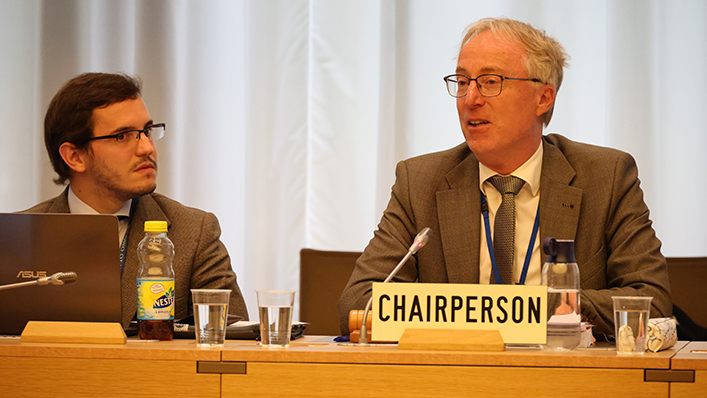 (AGENPARL) - Roma, 28 Giugno 2022
(AGENPARL) - Roma, 28 Giugno 2022(AGENPARL) – mar 28 giugno 2022

New notifications of RTAs
Since its last meeting in March, the Committee received notifications on two RTAs. One refers to the suspension of the free trade agreement between Nicaragua and the Separate customs territory of Taiwan, Penghu, Kinmen and Matsu on goods and services and the other refers to the signature of the Comprehensive Economic Partnership Agreement between the European Free Trade Association states and Indonesia on goods and services(1).
Review of RTAs
Members considered the Free Trade Agreement between Ukraine and Israel (goods and services), which entered into force on 1 January 2021. Under this agreement, Israel abolished duties on 9 per cent of its imports of agricultural products from Ukraine and 80 per cent of its imports of Ukrainian industrial goods. Ukraine did so for approximately 7 per cent of its imports of agricultural products from Israel and 70 per cent of industrial goods.
Members heard that Israel’s exports to Ukraine increased from USD 197 million in 2020 to USD 234 million in 2021. Ukraine’s exports to Israel also rose, accounting for USD 776 million in 2021, from USD 640 million in 2020. In 2021, 64 per cent of Israel’s exports to Ukraine consisted of chemicals and chemical products, followed by food and agriculture and electrical and machinery equipment. Israel’s imports from Ukraine consisted mainly of food and agriculture products.
The factual presentation of the agreement prepared by the WTO Secretariat can be found here.
Several members took the floor to express their strong opposition to the invasion of Ukraine. The Russian Federation responded by saying that the WTO was not the proper venue for a discussion of this nature.
Members considered the Preferential Trade Agreement between Namibia and Zimbabwe on goods, which entered into force in April 1993. The parties noted that this agreement is based on the Southern African Development Community Protocol on Trade, which seeks to promote trade as an engine for economic development and poverty eradication in the region.
The PTA provides for reciprocal duty-free market access, subject to rules of origin that require at least 25 per cent of local content for manufactured products. The entry into force of this agreement allowed for trade between Namibia and Zimbabwe to increase significantly from below USD 5 million in the 1990s to over USD 20 million in 2019.
The factual presentation of the agreement can be found here.
Members considered the Association Agreement between the United Kingdom and Chile on goods and services, which entered into force on 1 January 2021. The UK noted that the FTA largely replicates the European Union-Chile Agreement and covers goods, services, government procurement and intellectual property. In addition to containing 17 joint declarations – including on trade in wine and spirits – the agreement provides for an annual trade dialogue between the UK and Chile to review its operationalization at ministerial level.
The factual presentation of the agreement can be found here.
Members considered the Agreement on Trade Continuity between the United Kingdom and Canada on goods and services, which entered into force on 1 April 2021. Replicating the European Union-Canada Comprehensive Economic Agreement, the agreement provides for the elimination of tariffs on most of the bilateral trade, which amounted to GBP 21 million in 2021. Investor-state dispute settlement provisions are suspended, with the parties agreeing to undertake a comprehensive joint review. The parties noted that the provisional agreement was replaced by a UK-Canada Free Trade Agreement, which entered into force on 24 March 2022.
The factual presentation of the agreement can be found here.
Members considered the Association Agreement between the United Kingdom and Jordan on goods, which entered into force on 1 May 2021. The agreement replicates the European Union-Jordan trade agreement. Under the Agreement, 97.1 per cent of Jordan’s tariffs became duty free, representing 98.9 per cent of Jordan’s total imports from the UK over the period 2018-2020 while 94.8 per cent of the UK’s tariff is duty free, accounting for almost 100 per cent of the UK’s imports from Jordan during this period.
The factual presentation of the agreement can be found here.
Members considered the Association Agreement between the European Union and Central America on goods and services(2), which entered into force in 2013. It contains provisions on special and differential treatment to help drive economic growth in Central America and further its integration into the world trading system. Since the agreement’s entry into force in 2013, the EU’s exports to the region have increased by 44 per cent and Central America’s exports to the EU by 96 per cent. At the end of a transition period in 2022, Central American exporters will face zero duties on 95 per cent of the EU’s tariff lines while EU exports will face zero duties for 95-96 per cent of Central American tariffs.
The factual presentation of the agreement can be found here.
Implementation of the RTA Transparency Mechanism
Members were informed that 61 RTAs in force are yet to be notified to the WTO. In addition, a factual presentation has to be prepared for 64 RTAs involving WTO members and 37 involving non-members, counting goods and services separately. An updated list of the status of the preparation of factual presentations is available here.
The 2006 RTA Transparency Mechanism provides for early announcement by members of their RTAs and for notification to the WTO and a transparency process in the Committee on RTAs. More information can be found here.
Next meeting
The next meeting of the RTA Committee is scheduled for 22-23 September.
Footnotes
Share
0671.pdf’>671.pdf
Fonte/Source: https://www.wto.org/english/news_e/news22_e/rta_27jun22_e.htm

